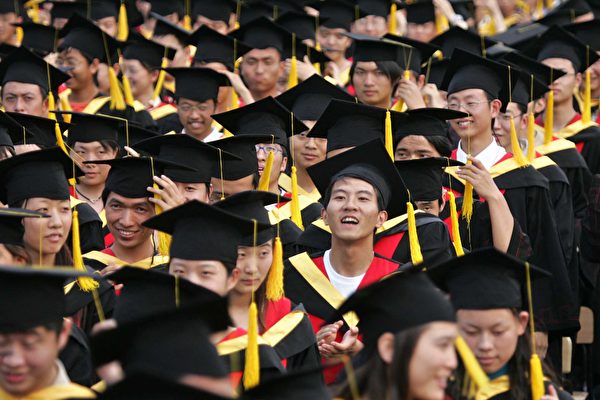Shanghai Jiao Tong University’s doctorate enrollment for 2026 is estimated to be around 5,000 students, expanding by over 40% in the next three years. This news has recently sparked wide social attention, with many scholars and commentators analyzing the expansion from various perspectives. They point out that behind the increase lies the authorities’ shift in employment pressure, imbalanced allocation of education resources, and systemic issues.
In recent days, the enrollment brochure for doctoral students published by Shanghai Jiao Tong University reveals that about 5,000 students are planned to be enrolled in the year 2026, with approximately 4,000 at the main campus. The basic learning period for direct doctoral students is 5 years, while for other doctoral students, it is 4 years.
In terms of tuition fees, full-time doctoral students in science and engineering disciplines pay 10,000 yuan per year; part-time accounting doctoral students have a total tuition fee of 780,000 yuan for the entire learning period (4 to 6 years), while full-time accounting doctoral students pay 520,000 yuan, and full-time psychology doctoral students pay 270,000 yuan.
Responding to inquiries from Jiupai News, the staff of the Shanghai Jiao Tong University Graduate Enrollment Office mentioned that related costs for joint training programs can be reimbursed by companies.
According to statistics from e-commerce magazines and other media outlets, Shanghai Jiao Tong University enrolled 3,500 doctoral students in 2024, 4,000 in 2025, and is estimated to increase by 25% in 2026 compared to 2025, with an overall expansion of over 40% in the past three years. The university enrolled around 5,000 new undergraduate students in 2025, with the scale of doctoral enrollment already nearly matching that of undergraduate enrollment.
A search by reporters at Epoch Times found that in recent times, several key Chinese universities have released their doctoral enrollment regulations for 2026, specifying the scale of enrollment. For instance, Xi’an Jiao Tong University plans to enroll about 2,900 doctoral students, Nanjing University of Science and Technology around 1,000, and Nankai University in Tianjin intends to admit over 1,800 doctoral students.
Legal scholar Yuan Hongbing, currently residing in Australia, criticized the doctoral expansion during an interview with Epoch Times on November 22nd, focusing on institutional criticisms of the increase.
Yuan pointed out that the large-scale recruitment of doctoral students, especially part-time doctoral students, has become a means for some education system personnel to engage in corrupt activities to gain “black economic benefits.” He believes that the “recruitment of a large number of doctoral students is actually a typical manifestation of the thorough corrosion of the Chinese Communist Party’s education system.”
From an economic and social background perspective, Yuan Hongbing analyzed that the current dilemma of “graduation means unemployment” forces a large number of undergraduate graduates to pursue master’s and doctoral degrees.
He emphasized that this phenomenon is a representation of the “current economic crisis in China’s education field.” He also pointed out that many part-time doctoral programs currently require students to self-fund, imposing an additional economic burden through high tuition fees.
The aforementioned expansion trend is closely related to the policies of the Chinese Communist Party (CCP) authorities. In January 2025, the CCP Central Committee and the State Council issued the “Outline of Building a Strong Education Country (2024-2035),” which clearly supports expanding the enrollment scale of undergraduate education in universities, increasing the scale of graduate student training, and raising the proportion of doctoral students. This policy provides institutional basis for the expansion of doctoral recruitment in various universities.
The enrollment brochure of Shanghai Jiao Tong University indicates that doctoral students have the option of full-time and part-time learning forms, with professional doctoral students being able to choose part-time study. Brochures for part-time professional doctoral enrollment will be released separately.
This arrangement provides a channel for working professionals to pursue a doctoral degree and constitutes an important source of tuition income.
Various commentators have provided analyses from different perspectives regarding the large-scale expansion.
Education observer blogger “Teacher Xiao Lu” believes that the expansion has multiple motives: high tuition fees bring considerable income to universities; the expansion can delay the time for graduates to enter the job market, alleviating employment pressure; doctoral students are cheaper to cultivate than formal researchers, providing cost advantages.
He also expressed concerns about the quality of education, stating that the “mass production” mode makes it difficult to ensure the quality of doctoral education and questioned whether this training method can create actual value for enterprises and research institutions.
Another blogger, “Old Ding on Part-time Master’s and Doctoral Studies,” analyzed from a policy perspective, pointing out that the “Outline of Building a Strong Education Country (2024-2035)” issued in January 2025 clearly advocates expanding the scale of graduate student training and increasing the proportion of doctoral students.
He believed that this expansion exhibits three characteristics: an increase in part-time enrollment, targeting working professionals with higher tuition fees; the expansion of professional doctoral programs is greater than academic doctoral programs; there is a significant increase in enrollment in fields such as science and engineering, particularly in artificial intelligence, new energy, and biomedicine, while the expansion in humanities and social sciences categories is relatively limited, indicating the authorities’ heavy investment in science and engineering.
Current affairs commentator “Big Head Discusses People” raised doubts from a resource allocation perspective. He pointed out that not only Shanghai Jiao Tong University, but also Zhejiang University and Tsinghua University have doctoral enrollment quotas of around 5,000 each this year. The combined enrollment total of just these three universities exceeds the total national doctoral enrollment in 1980 and surpasses the total enrollment of top American universities.
He questioned, “If you recruit 5,000 doctoral students, do you have 5,000 doctoral supervisors?” and urged universities to “respect the rules of running a school,” cautioning against mismatches between faculty and enrollment leading to dilution of doctoral degrees.

